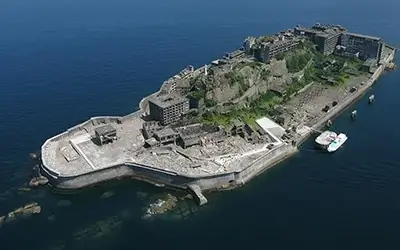
Nagasaki
Nagasaki prefecture is on the southern island of Kyushu in Japan, and it is known worldwide as the location where one of the atomic bombs fell in WW2. You can learn more about this disaster in the museum and Peace Park in the city. But as you can read in this travel guide, there is more to the prefecture than this tragic history.
There is a long and interesting history of interaction with the West in Nagasaki, of which you can learn more in various places of interest. Several beautiful churches bear witness to the Christian influence in the region. Hashima Island, or the ‘battleship island’ is a fascinating place for lovers of urban exploration. Unzen Onsen is a spot of natural scenic beauty and healthy hot springs.
-

Gunkanjima (Hashima Island)
What is Gunkanjima? Gunkanjima, or Hashima Island, is a small, abandoned island off the coast of Nagasaki. From a distance, it looks like a battleship—so people started calling it “Gunkanjima,” which means “Battleship Island” in Japanese. The island has a powerful history. It once had a busy coal mine run by Mitsubishi. In the 1950s,…
-
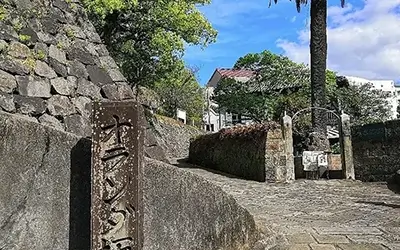
Dutch Slope
What is Dutch Slope (Orandazaka) in Nagasaki? Dutch Slope, or Orandazaka (オランダ坂), is a quiet stone path in Nagasaki’s Higashi-Yamate area. It got its name because many Westerners lived nearby in the 1800s—not just Dutch people, but also British and American traders.Today, you can still walk past old Western-style houses, ivy-covered walls, and scenic corners.…
-
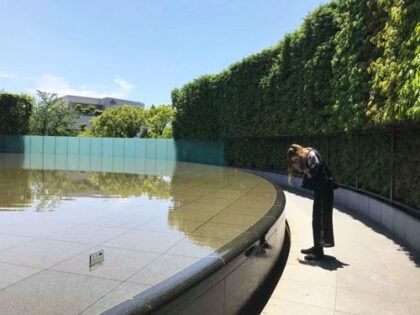
Atomic Bomb Museum, Nagasaki | A Place for World Peace
In Nagasaki, very close to where the epicenter of the explosion of the atomic bomb was, is the Atomic Bomb Museum. Here, you can learn about what happened in 1945, and why this should never happen again.
-
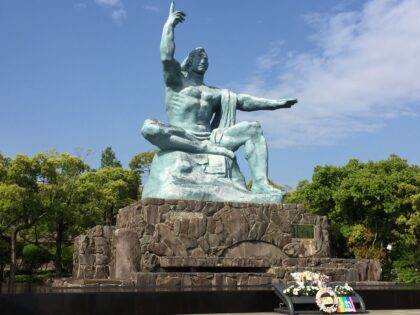
Nagasaki Peace Park, Nagasaki | A Place for World Peace
One of the most emotional places in Japan is the so-called Peace Park. It is located in Nagasaki, a few minutes’ walk from the atomic bomb museum and it commemorates the victims of the atomic bombing.
-

Sanno Sanctuary, Nagasaki has connected Japan with the world
One of the most impressive and curious places in Nagasaki is the Sanno Shrine because the main torii (gateway to the shrine) maintains only one pillar. How did this happen?
-
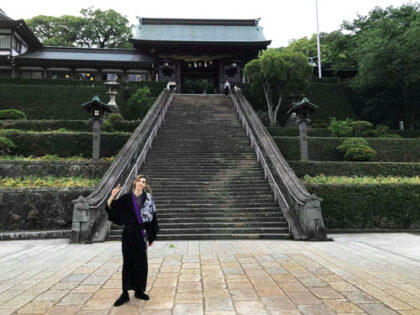
Suwa Shrine, Nagasaki | Beautiful main shrine and historic statues of sacred horses
The Suwa shrine in Nagasaki was founded in 1614 as a way to expel the Christian faith from the region. During the Edo period, Nagasaki was one of the few places where there was contact with foreigners.
-
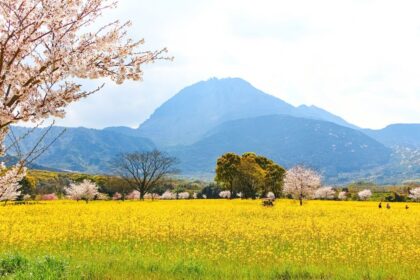
Shimabara, Nagasaki | Beautiful nature and rich tourism resources
Although Shimabara has been plagued by (man-made) disasters in its history, it is a nice town to visit when you are traveling through Kyushu. The upside to being in a seismically active area is that there are many hot springs to be found.
-

Monument For The 26 Martyrs | Clash of Japanese Culture and Christianity
Around 1549, Christian missionaries started arriving in Japan. They usually came from countries such as Spain and Portugal, and their objective was to spread the word of the church.
-
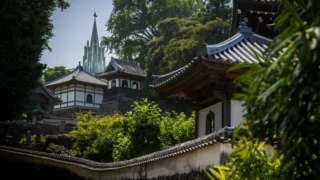
Nagasaki City | A city that connects the world and Japan
The city of Nagasaki is especially known for having been bombed with an atomic bomb during WW2. This fact overshadows its long history as an ancient point of contact with the Portuguese and the Dutch.